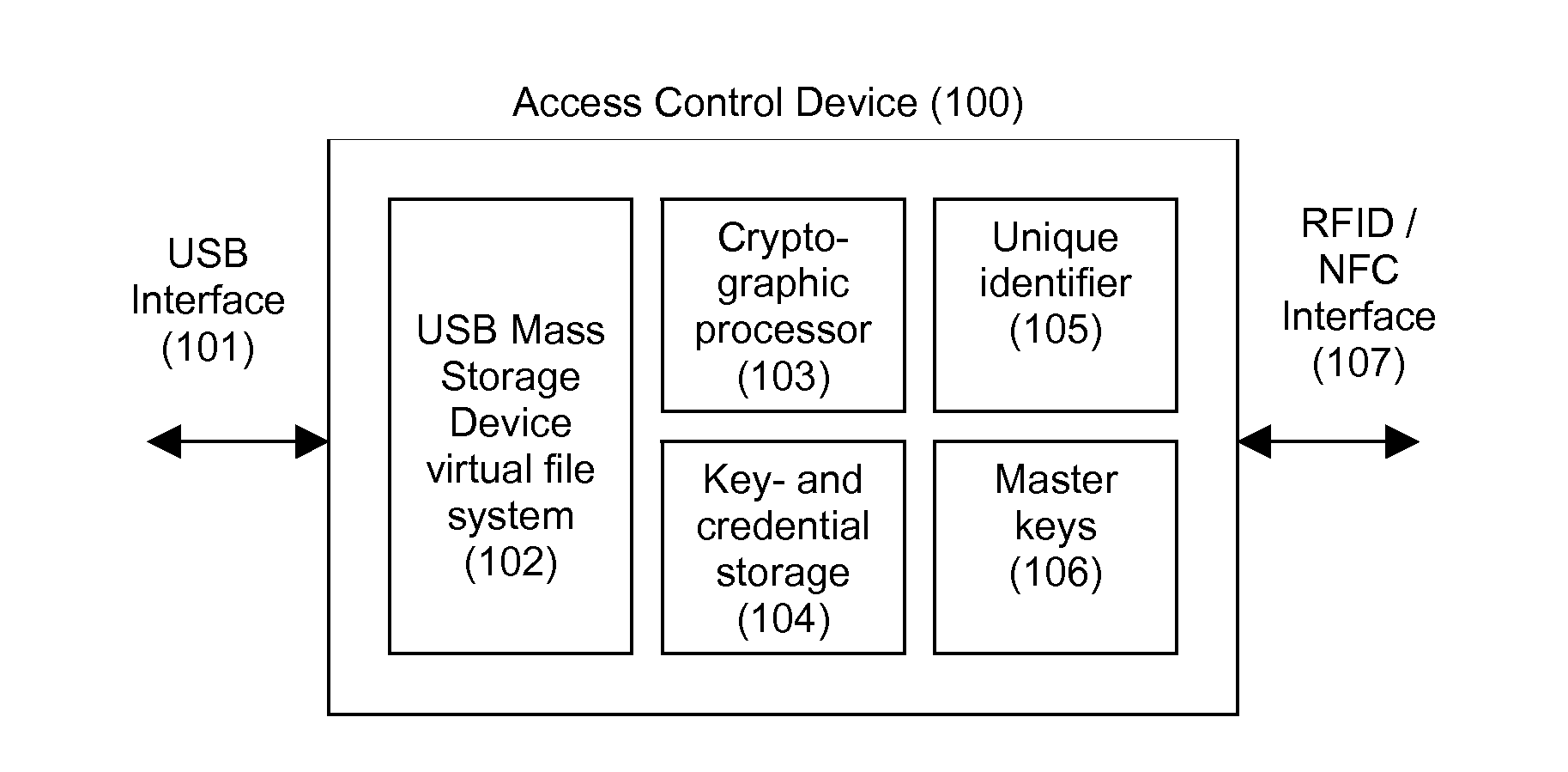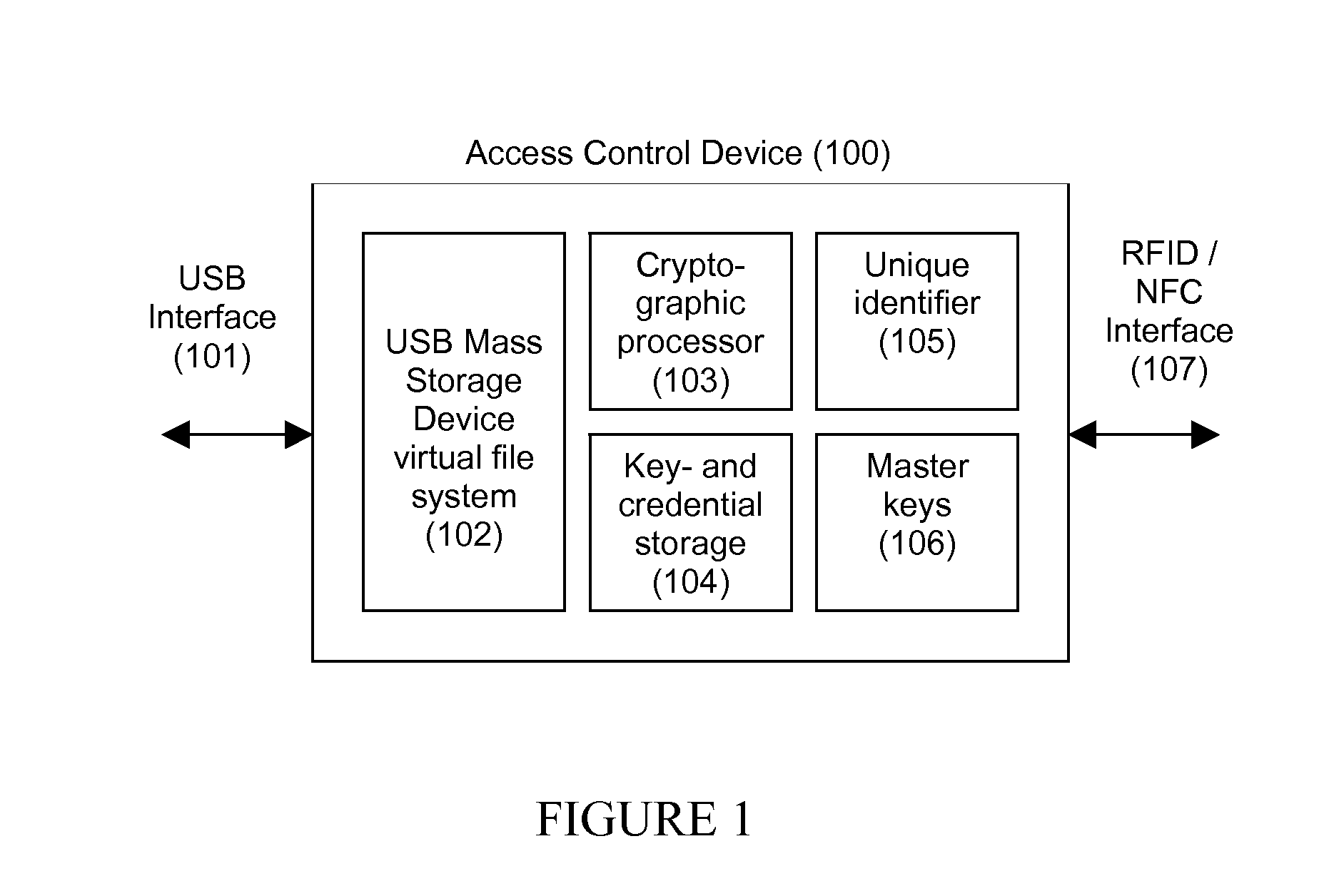Dual interface device for access control and a method therefor
a dual-interface device and access control technology, applied in the field of dual-interface device for access control and a method therefor, can solve the problems of inability to securely update access control tokens, difficult to implement, and significant obstacles for users
- Summary
- Abstract
- Description
- Claims
- Application Information
AI Technical Summary
Benefits of technology
Problems solved by technology
Method used
Image
Examples
example 1
Update of Credentials by the Means of an USB MSD Device
[0040]By providing an access control device having an USB Mass-Storage Device (MSD) interface, the device can present itself to a host computer as a generic USB memory stick. Cryptographic information can then be added, revoked and be backed up using the operating system's standard functionality for file handling.
[0041]The device provides a MSD device with a virtual file system, accepting wrapped and / or Authenticated Encryption with Associated Data (AEAD) files only. A binary file copied to the device will then be decrypted and verified by the pre-configured identity data of the device. If the MAC or signature does not match, the file is rejected. If it matches, the decrypted data is stored in internal non-volatile memory (104). Conversely, information created by the device can be encrypted and wrapped in the same manner, thereby allowing files to be exchanged transparently. It is then a matter for the entity receiving the files...
example 2
One-Way One-Time-Password (OTP) Generator Via USB
[0046]For access to basic services where user identification and authentication is needed, the control access device can act as OTP generator. The OTP generator can transfer OTP by mimicking an USB keyboard, thereby allowing OTPs to be received by any host application without the need for any drivers- or other communication proxies. The device can have an optional button to trigger generation and transmission of an OTP, without explicit intervention or synchronization with a host application other than the host application being able to receive a number of emulated keystrokes. The OTP generator may also provide a programmatic interface to explicitly generate an OTP by command of a host application.
example 3
Authentication Device for Computer Services Via USB
[0047]When an access control device is attached to a host computer via the USB port, the device can act as an identification- and authentication device in a transaction process over a computer network. An application program can access the device via an Application Programming Interface (API) that allows the unique identification number of the device to be read. Via the API, further functionality for challenge-response or mutual authentication can be accessed. By the means of an integral cryptographic processor (103) and cryptographic key store (106), authentication can be performed via a range of well-known methods and protocols. The basic steps are as follows:[0048]1. Request the device identity via the API[0049]2. Send a challenge to the device[0050]3. The device performs a cryptographic operation on the challenge and the device identity[0051]4. The response is sent back via the API[0052]5. The host application can then decode th...
PUM
 Login to View More
Login to View More Abstract
Description
Claims
Application Information
 Login to View More
Login to View More - R&D
- Intellectual Property
- Life Sciences
- Materials
- Tech Scout
- Unparalleled Data Quality
- Higher Quality Content
- 60% Fewer Hallucinations
Browse by: Latest US Patents, China's latest patents, Technical Efficacy Thesaurus, Application Domain, Technology Topic, Popular Technical Reports.
© 2025 PatSnap. All rights reserved.Legal|Privacy policy|Modern Slavery Act Transparency Statement|Sitemap|About US| Contact US: help@patsnap.com


